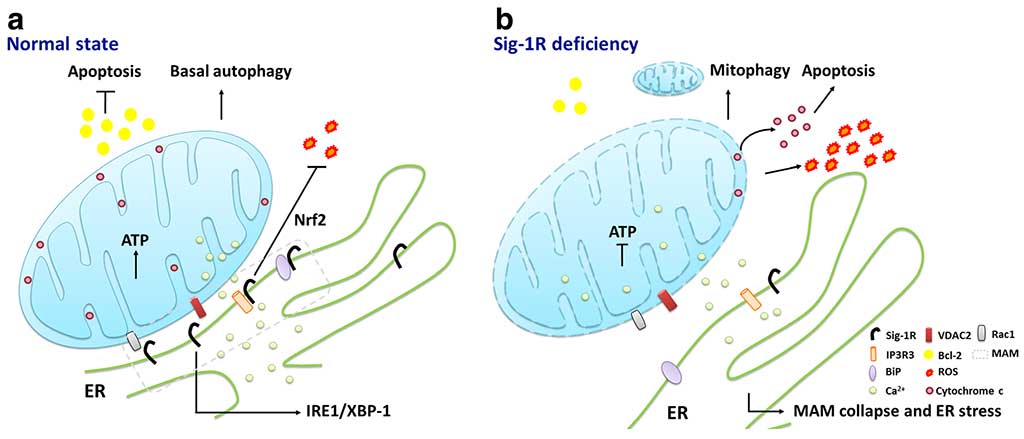Reviews To Read – September 2017
Weng, Tzu-Yu; Tsai, Shang-Yi Anne; Su, Tsung-Ping
Roles of sigma-1 receptors on mitochondrial functions relevant to neurodegenerative diseases. Journal Article
In: J Biomed Sci, vol. 24, no. 1, pp. 74, 2017, ISSN: 1423-0127 (Electronic); 1021-7770 (Linking).
@article{Weng2017,
title = {Roles of sigma-1 receptors on mitochondrial functions relevant to neurodegenerative diseases.},
author = {Tzu-Yu Weng and Shang-Yi Anne Tsai and Tsung-Ping Su},
url = {https://www.ncbi.nlm.nih.gov/pubmed/28917260},
doi = {10.1186/s12929-017-0380-6},
issn = {1423-0127 (Electronic); 1021-7770 (Linking)},
year = {2017},
date = {2017-09-16},
journal = {J Biomed Sci},
volume = {24},
number = {1},
pages = {74},
address = {Cellular Pathobiology Section, Integrative Neuroscience Branch, Intramural Research Program, National Institute on Drug Abuse, NIH, DHHS, IRP, NIDA/NIH, Triad Bldg. suite 3512, 333 Cassell Drive, Baltimore, MD, 21224, USA.},
abstract = {The sigma-1 receptor (Sig-1R) is a chaperone that resides mainly at the mitochondrion-associated endoplasmic reticulum (ER) membrane (called the MAMs) and acts as a dynamic pluripotent modulator in living systems. At the MAM, the Sig-1R is known to play a role in regulating the Ca2+ signaling between ER and mitochondria and in maintaining the structural integrity of the MAM. The MAM serves as bridges between ER and mitochondria regulating multiple functions such as Ca2+ transfer, energy exchange, lipid synthesis and transports, and protein folding that are pivotal to cell survival and defense. Recently, emerging evidences indicate that the MAM is critical in maintaining neuronal homeostasis. Thus, given the specific localization of the Sig-1R at the MAM, we highlight and propose that the direct or indirect regulations of the Sig-1R on mitochondrial functions may relate to neurodegenerative diseases including Alzheimer's disease (AD), Parkinson's disease (PD), Huntington's disease (HD) and amyotrophic lateral sclerosis (ALS). In addition, the promising use of Sig-1R ligands to rescue mitochondrial dysfunction-induced neurodegeneration is addressed.},
keywords = {},
pubstate = {published},
tppubtype = {article}
}
The sigma-1 receptor (Sig-1R) is a chaperone that resides mainly at the mitochondrion-associated endoplasmic reticulum (ER) membrane (called the MAMs) and acts as a dynamic pluripotent modulator in living systems. At the MAM, the Sig-1R is known to play a role in regulating the Ca2+ signaling between ER and mitochondria and in maintaining the structural integrity of the MAM. The MAM serves as bridges between ER and mitochondria regulating multiple functions such as Ca2+ transfer, energy exchange, lipid synthesis and transports, and protein folding that are pivotal to cell survival and defense. Recently, emerging evidences indicate that the MAM is critical in maintaining neuronal homeostasis. Thus, given the specific localization of the Sig-1R at the MAM, we highlight and propose that the direct or indirect regulations of the Sig-1R on mitochondrial functions may relate to neurodegenerative diseases including Alzheimer's disease (AD), Parkinson's disease (PD), Huntington's disease (HD) and amyotrophic lateral sclerosis (ALS). In addition, the promising use of Sig-1R ligands to rescue mitochondrial dysfunction-induced neurodegeneration is addressed.

